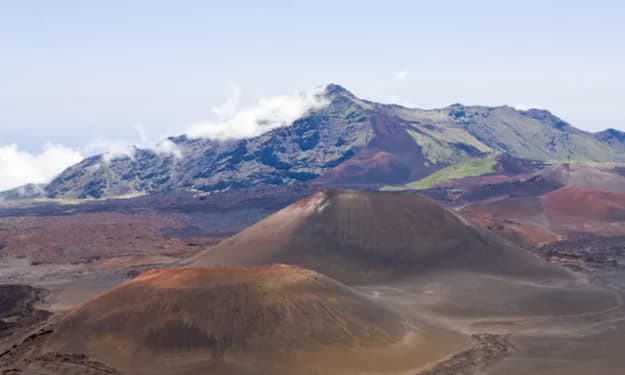Exploring Water Potential on Mars and Beyond: A Promising Frontier in Planetary Exploration
Exploring Water Resources in the Solar System: From Mars to Moons and Dwarf Planets
Introduction:
The Red Planet, Mars, with its arid and barren appearance, has long been perceived as devoid of any significant water presence. However, scientific discoveries have challenged this notion, revealing compelling evidence that suggests Mars may have harbored substantial amounts of water in its past. Ancient river valley networks, lake beds, and distinctive minerals and rocks that formed in liquid water all point towards Mars' watery history. In fact, the planet experienced catastrophic floods approximately 3.5 billion years ago. While the surface water on Mars is mostly absent due to the planet's thin atmosphere, water reservoirs beneath the surface, particularly in the polar regions, have been identified. Notably, the northern polar ice cap and occasional flows of salty water down crater walls and hillsides attest to the presence of water on Mars. This newfound knowledge prompts the question of whether this water resource can be utilized during future human missions to the red planet.
Utilizing Martian Water for Human Missions:
The availability of water on Mars presents an opportunity for reducing the payload carried by spaceships traveling from Earth to Mars. By sourcing water from Mars, the spacecraft can alleviate the need to transport large quantities of water, significantly reducing both weight and mission costs. The primary challenge lies in purifying Martian water, as it is inherently salty and potentially toxic to humans. The salts found on Mars differ from those on Earth, as they accumulate in dry areas over time, such as byproducts of rocket fuel and from road flares and fireworks. However, with proper filtration techniques, it is theoretically possible to remove up to 90% of the harmful substances from Martian water. Subsequent treatment with a UV disinfection unit would further eliminate any foreign microbes, ensuring the safety of astronauts and preventing the introduction of dormant Martian microbes to Earth. Consequently, future missions to Mars can overcome the hurdle of obtaining drinkable water by bringing the necessary purification equipment capable of adapting to varying water qualities.
Water Potential on Other Worlds in the Solar System:
Beyond Mars, several intriguing celestial bodies in our solar system offer prospects for the presence of water and the potential for life. Europa, one of Jupiter's largest moons, has garnered significant attention as it harbors a vast saltwater ocean beneath its ice shell. Researchers believe that plumes of water erupting from cracks in Europa's ice shell release the contents of its ocean into space. There are indications of warm water near the moon's equator, raising the possibility of supporting complex life forms. NASA's Europa Clipper mission, scheduled for 2030, aims to unravel more about Europa's potential for life.
Another captivating world is Enceladus, one of Saturn's moons. Despite its small size, Enceladus hosts a warm and salty liquid ocean beneath its ice crust. Regular watery eruptions from ice geysers release over one thousand tons of water mixed with organic molecules and salts into space. The moon's ocean may owe its warmth to tidal forces from Saturn, potentially fostering hydrothermal activity. The icy moon Ganymede, also orbiting Jupiter, is believed to house an ocean beneath its thick ice crust. While no ice geysers have been observed on Ganymede, its aurora activity in 2015 hinted at the presence of a warm and salty ocean.
Additionally, some worlds in our solar system hold the possibility of water on their surface. Callisto, another moon of Jupiter, is thought to contain water but lacks geological activity required for the presence of an ocean. This suggests that any water on Callisto may exist as a vast frozen mass. Ceres, a dwarf planet, has exhibited characteristics indicating a potential watery interior. Examination by the Dawn spacecraft in 2015 revealed that Ceres might be covered with an icy mantle and host a slushy ocean underneath. Saturn's moon Titan showcases pools of liquid on its surface, composed of hydrocarbons such as methane and ethane, creating rivers, lakes, and an ocean hidden beneath the icy crust. Finally, Pluto, previously considered an icy world, offers hints of a hidden ocean resulting from the tidal forces between Pluto and its moon, Charon.
Conclusion:
The exploration of water resources beyond Earth presents exciting opportunities for planetary research and potential human colonization efforts. Mars, with its evidence of ancient water and present subsurface reservoirs, offers an intriguing prospect for utilizing Martian water during future missions. While challenges exist in purifying and making Martian water drinkable, advancements in filtration techniques and UV disinfection methods can address these concerns. Moreover, other worlds in our solar system, such as Europa, Enceladus, Ganymede, Callisto, Ceres, Titan, and Pluto, hold promise for water existence, providing further avenues for exploration and expanding our understanding of habitable environments. These discoveries push the boundaries of our knowledge, inspiring future endeavors to unlock the mysteries of water in the cosmos.
About the Creator
Himanshu Singh
Education Specialist | Researcher | Advocate
Transforming Education for a Brighter Future ✨
Passionate about student-centered learning, inclusive education, and innovative teaching strategies. Join me on this educational journey! 🎓🌟






Comments
There are no comments for this story
Be the first to respond and start the conversation.